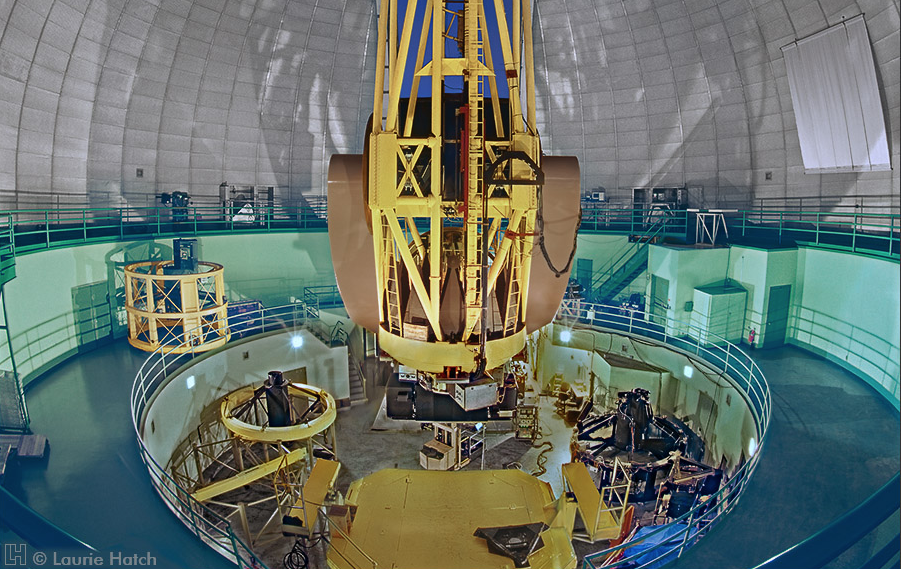Science
-
Current Research
-
Search for Extrasolar Planets
-
Adaptive Optics & Laser Guidestars
-
Evolution of Stars & Galaxies
-
Supernovae Survey to Cosmology
-
Brown Dwarfs & Low-Mass Stars
-
Distant Radio Galaxies
-
Massive Intergalactic Hydrogen Clouds
-
Optical Search for Extraterrestrial Intelligence
-
Education & Outreach
-
Active Telesopes
-
Historic Telesopes
-
Live HAMCAMS
-
Observer Information
Mailing List

- The Kast Spectrograph on the Shane 3-meter telescope is used for reseach on the Milky Way galaxy. Photo by Laurie Hatch.
Since the early 1980s, Lick Observatory has been well known for research on chemical compositions of stars within our Milky Way galaxy.
Astronomers observe properties of stars in various stages of their evolution, piecing together pictures of how both stars and galaxies evolve chemically.
Astronomers are particularly interested in nucleosynthesis: how elements are created in stars. They want to know exactly how a star, which starts out as mostly hydrogen, becomes rich in metals and other elements over time.
Two research methods are employed. The first is analogous to an archeological dig. Astronomers observe elements in older stars within our own galaxy at various evolutionary stages. Using this late (evolutionary) process data, they create a continuum of evolutionary history by logging the results into a "time line" to draw conclusions about how older stars have evolved.
Another research method is analogous to replaying a videotape of an action that occurred long ago. Astronomers study the spectra of high red-shift galaxies, which are distant galaxies in early stages of evolution. Observing the early processes of young galaxies, astronomers extrapolate these findings to draw conclusions about how young stars evolve.
The goal of this research is to understand the evolution of individual stars as well as the overall chemical evolution of the Milky Way and other galaxies. Both the Kast and the Hamilton spectrographs are used in this research.
